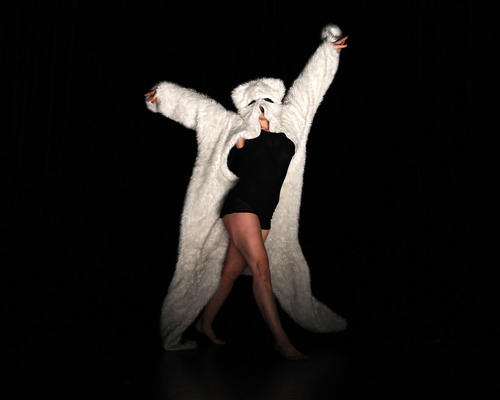
On Wednesday, November 20, 2019, Yale’s Center for Collaborative Arts and Media welcomed choreographer and dancer Eleanor Bauer as part of their Wednesday Wisdom visiting artist series. Bauer’s presentation, entitled Choreo/graphy, explored the autonomy and relationship between dancing and writing and their way of meeting in choreographic practice.
Bauer began by explaining that in her early experiments with dance and movement, she did not have language for what she was doing. Inspired by this, she explored putting some kind of movement practice first and then examining how it could be shared and translated. Her and her collaborators would participate in shared movement experiences, such as a dance party, and then write about the world created by this physical experience. This highlighted the socialness of what Bauer calls “dance thinking,” or how we articulate the experience of dancing. However, she was clear that since her exploration of this concept was conducted in English, it has evolved within a colonial, Western language. Language has been proven to affect how we experience things, depending on the words that are available and the connotations they can carry, and in Bauer’s experience, dance is no different.
Bauer articulated the uniqueness of dance as opposed to regular movement in terms of language and thought. There is a specific way of thinking that is connected to dancing. She also addressed a common misunderstanding of the nature of dance - that choreographers construct a piece on their own and simply instruct the dancers on the precise movements. In reality, dancers tend to be heavily involved in the creation of both particular movements and the piece as a whole. Since it is coming to life in their bodies, they have many novel insights that can improve the choreography.
Bauer then moved on to discussing the concept of notation in dance. Early on, dancers and choreographers realized that dance had to be written down in order to be remembered, as relying on memory could change fundamental parts of a piece. After this, there were many diverse attempts at notating dance, but none of them truly lasted. In all of these attempts, even the current ones, some of the complexity of the dance is lost. However, this is a small price to pay in gaining the ability to endlessly reinterpret choreography.
The presentation ended with Bauer showcasing some of her work in motion capture from a previous visit to the CCAM. In the footage, Bauer’s moving body was reduced to a series of points, which she found quite freeing. She explained that in this state, she was able to leave behind the expectations of the body, and experiment with perspectives in the borderless space.